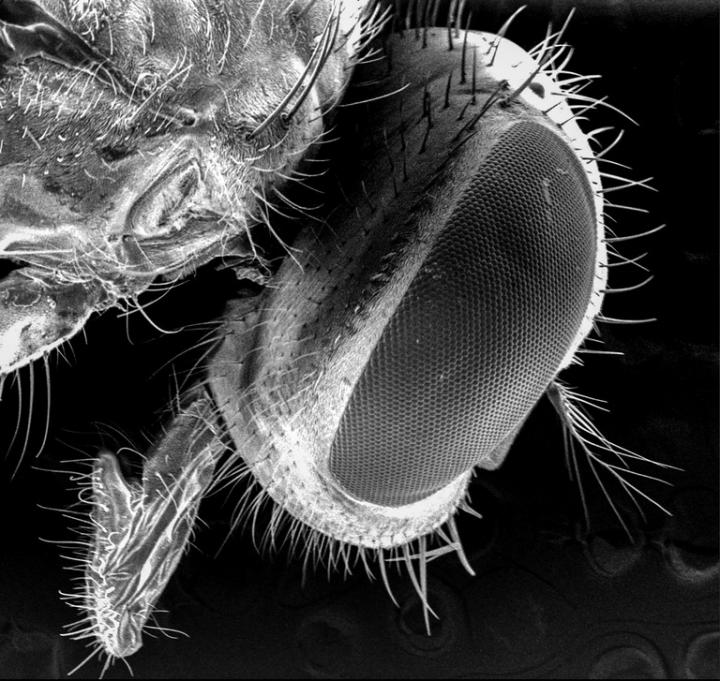
Researchers used a scan electron microscope to find where bacterial cells and particles attach to the fly body. The electron microscope captures an up close look at the head of a blowfly in this picture. Credit Ana Junqueira and Stephan Schuster
Houseflies may be more dangerous than researchers previously believed.
An international team of researchers led by scientists from Penn State University have found common houseflies and blowflies carry potentially hundreds of diseases that can be harmful to humans.
“We believe that this may show a mechanism for pathogen transmission that has been overlooked by public health officials and flies may contribute to the rapid transmission of pathogens in outbreak situations,” Donald Bryant, the Ernest C. Pollard Professor of Biotechnology and professor of biochemistry and molecular biology at Penn State, said in a statement.
The researchers studied the microbiomes of 116 houseflies and blowflies from three different continents and found, that in some cases, the flies carried hundreds of different species of bacteria.
They also investigated the microbial content of individual fly body parts, including legs and wings and found that legs transfer most of the microbial organisms from one surface to another.
“The legs and wings show the highest microbial diversity in the fly body, suggesting that bacteria use the flies as airborne shuttles,” Stephan Schuster, a former professor of biochemistry and molecular biology at Penn State and the current research director at Nanyang Technological University in Singapore, said in a statement. “It may be that bacteria survive their journey, growing and spreading on a new surface.
“In fact, the study shows that each step of hundreds that a fly has taken leaves behind a microbial colony track, if the new surface supports bacterial growth,” he added.
Carrion flies—which includes blowflies and houseflies—are often exposed to unhygienic matter because they use feces and decaying organic matter to nurture their young, where they could pick up bacteria that could act as pathogens to humans, plants and animals.
The researchers found that blowflies and houseflies share over 50 percent of their microbiome, a mixture of host-related microorganisms and those acquired from the environments they inhabit. The flies also collected from stables carried fewer pathogens than those collected from urban environments.
The researchers found 15 instances of Helicobacter pylori—a pathogen that often causes ulcers in the human gut—largely in the blowfly samples collected in Brazil. The researchers believe the potential for flies to carry diseases may increase when more people are present.
“It will really make you think twice about eating that potato salad that’s been sitting out at your next picnic,” Bryant said. “It might be better to have that picnic in the woods, far away from urban environments, not a central park.”




